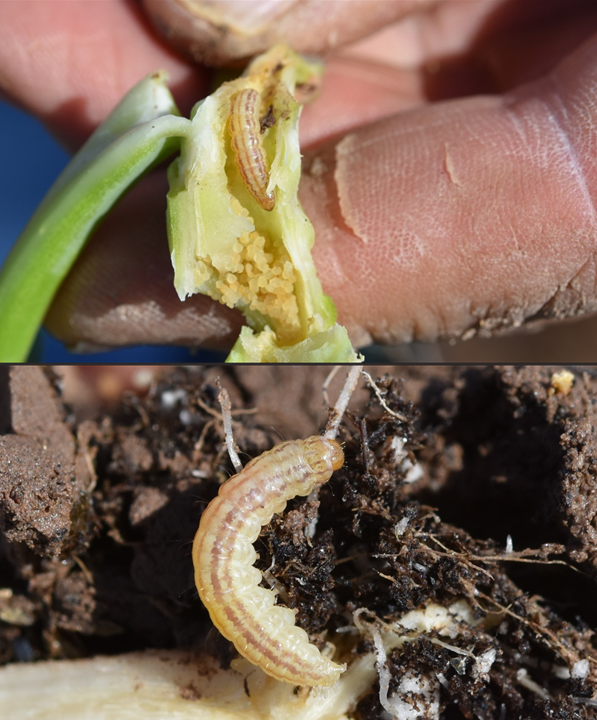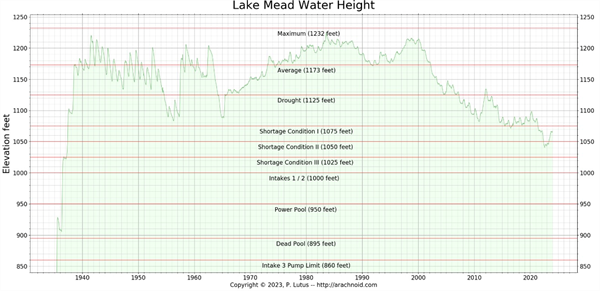-
Oct 5, 2022Another Strange Lepidopterous Pest Infesting Desert Produce
In the past week another unusual pest has shown up in desert brassica crops with reports of a strange larva infesting the terminals and stems of transplanted cauliflower and direct-seeded broccoli. Upon first observations, I believed it was a new Lep species since I had never seen this pest before. Initially we believed it to be the cabbage webworm, based on its feeding behavior, but it didn’t quite match the description of the webworm larvae. So, images were sent to Dr. Garrett Hughes, USDA-APHIS-PPQ who confirmed that the invader was the cabbage budworm, Hellula phidilealis, a Lep pest of tropical origin where it is a major problem in the Caribbean. Although it’s a new pest to me, it has been reported in Arizona and has previously been intercepted at the San Luis port of entry. What makes this pest so troublesome is that upon hatching, the neonate larvae bore into or just below the terminals of the plant, feeding within the stem. In young plants, this has caused plants to wilt and often desiccate. Feeding in older transplants damages the terminal growing point, and in many cases leaving the plant “blind”, much like bagrada bug feeding on seedling brassicas. To date, most of the damage has been reported in organic fields, with an occasional report from conventional production. It has also been reported in cabbage, collards, and kale. Go to this link: Cabbage Budworm in Desert Cole Crops for images of the pest and feeding damage.
So why did the cabbage budworm show up in such abundance this fall? It is truly a rare pest, not seen in this abundance in desert crops before. I can only speculate, but budworm moths likely migrated into the desert via monsoon storms or the remnants of hurricane Kay back in early September. Because the cabbage budworm is of tropical origin, the high humidity in the desert this fall growing season likely made the pest feel right at home. Another factor could involve the monsoon rains (exceeding 1.5” in many areas during August) that flushed excessive purslane growth in the cropping landscape. Yes, purslane is an alternate host for cabbage budworm, just like the white-lined sphinx moth hornworm. Combinations of tropical-like weather and an abundance of one of its weedy hosts could certainly have contributed to the unusual appearance of this pest in the desert. Being most abundant in organic brassica crops also makes sense since effective contact insecticides (i.e., pyrethroids, methomyl) are not available. Routine chemigations and early worm sprays likely explain why budworms have been largely unreported in conventional fields. Also, PCAs have been reporting that budworm larvae are not infesting crops where soil systemic insecticides such as Verimark transplant drench and Coragen at-plant, soil applications have been used. However, keep in mind as soil and plant residual of the systemic insecticides begin to decline, the plants may become susceptible to budworm feeding. So, keep your eyes open for this one, and feel free to pass on your experiences with this rare pest. We might not see it again for a while.
Go to this link: Cabbage Budworm in Desert Cole Crops for a description of its distribution, biology, damage, and management. To contact John Palumbo go to: jpalumbo@ag.Arizona.edu
To contact John Palumbo go to: jpalumbo@ag.Arizona.edu










